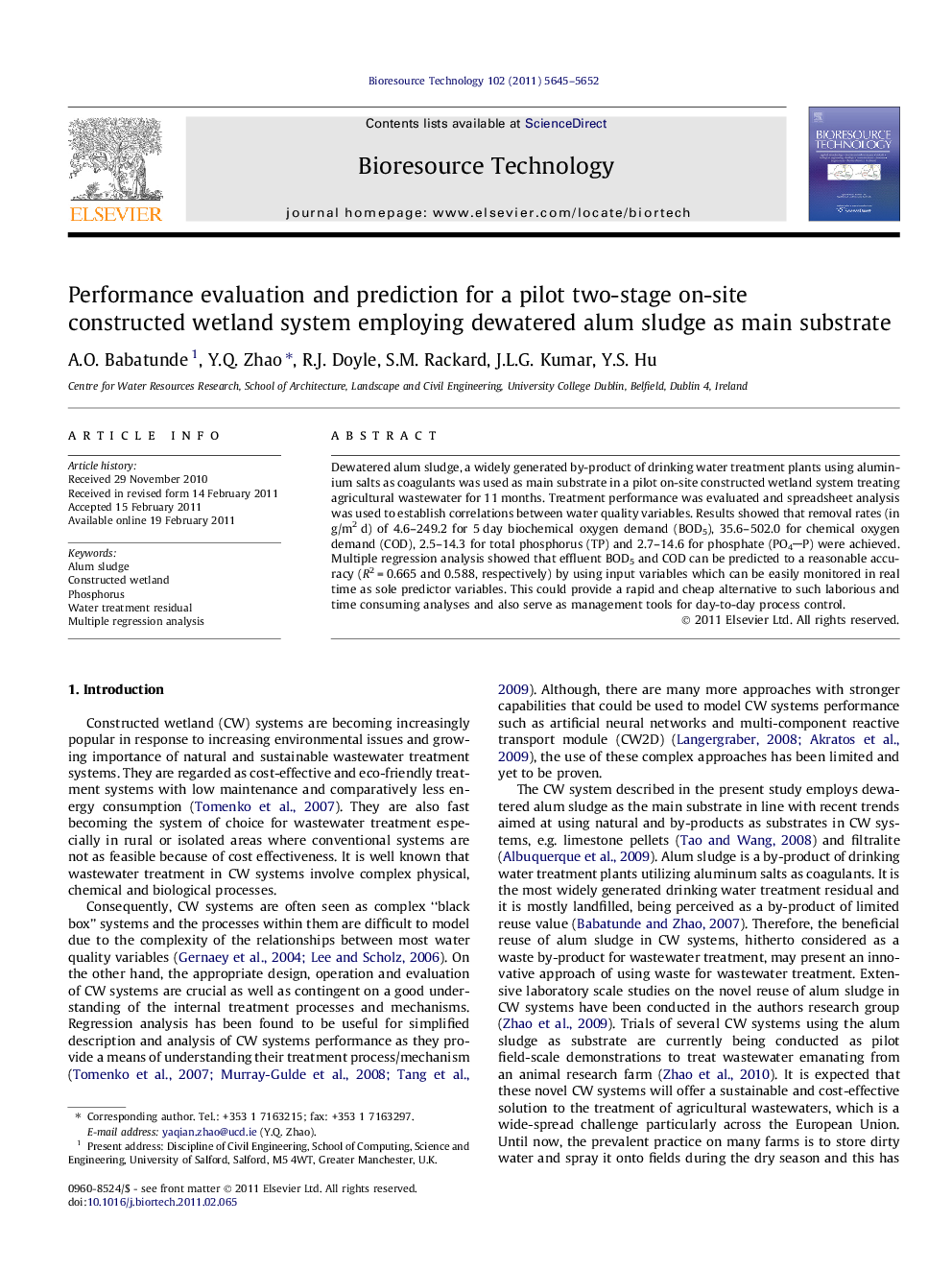| Article ID | Journal | Published Year | Pages | File Type |
|---|---|---|---|---|
| 681948 | Bioresource Technology | 2011 | 8 Pages |
Dewatered alum sludge, a widely generated by-product of drinking water treatment plants using aluminium salts as coagulants was used as main substrate in a pilot on-site constructed wetland system treating agricultural wastewater for 11 months. Treatment performance was evaluated and spreadsheet analysis was used to establish correlations between water quality variables. Results showed that removal rates (in g/m2 d) of 4.6–249.2 for 5 day biochemical oxygen demand (BOD5), 35.6–502.0 for chemical oxygen demand (COD), 2.5–14.3 for total phosphorus (TP) and 2.7–14.6 for phosphate (PO4P) were achieved. Multiple regression analysis showed that effluent BOD5 and COD can be predicted to a reasonable accuracy (R2 = 0.665 and 0.588, respectively) by using input variables which can be easily monitored in real time as sole predictor variables. This could provide a rapid and cheap alternative to such laborious and time consuming analyses and also serve as management tools for day-to-day process control.
Research highlights► Two-stage alum sludge-based wetland system can effectively treat agricultural wastewater. ► Regression analysis can be used to develop models for treatment performance. ► Such models can provide a cheap alternative for process control and management.
